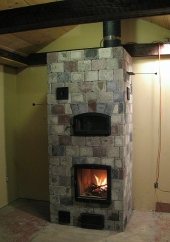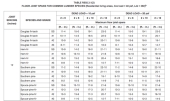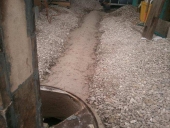




"Necessity is the mother of invention" That's why I'm a Jack of all trades, Master of some and have learned that Knowledge is power, but information isn't necessarily knowledge.




"Necessity is the mother of invention" That's why I'm a Jack of all trades, Master of some and have learned that Knowledge is power, but information isn't necessarily knowledge.




John Adamz wrote:3 days and counting to the deep freeze and snow. I had to do something and since I got no replies to this thread before today I went with idea 2, caare
Some nice work you are doing. I am wondering if you have an IR thermometer to measure the differences in the ground. The cob attached to the ducts will always be the better choice. Sand is not a good choice for a heat mass because each particle creates so much more surface area it is hard to put heat into them and have it stay there. You didn't say anything about my little green house within a green house idea of using the cold frames around the media beds so I figured you were going to pursue the floor duct heating to it's end. You do have to understand that any heat being run through the ducts is being cooled by the surrounding soil. Yes there is some fraction be transferred to the cob and tiles but consider the two masses... you have the earth which has basically infinity amount of area to it, that is cold. Then you have your heat ducts/cob and tiles which do have some heat potential in them but compared to what.....? Stick a cup of coffee in a refrigerator and tell me how that can work to overcome the cold of the frig? IF you don't define the area your are trying to heat and then isolate that from the colder area, you are going to be fighting an uphill battle. You really don't need to heat the whole space you need to concentrate on saving the beds themselves.
Not trying to be a negative Nancy, just putting out the facts as I see them. SCIENCE!
Peace, Jim




"Necessity is the mother of invention" That's why I'm a Jack of all trades, Master of some and have learned that Knowledge is power, but information isn't necessarily knowledge.








"Necessity is the mother of invention" That's why I'm a Jack of all trades, Master of some and have learned that Knowledge is power, but information isn't necessarily knowledge.




"You must be the change you want to see in the world." "First they ignore you, then they laugh at you, then they fight you, then you win." --Mahatma Gandhi
"Preach the Gospel always, and if necessary, use words." --Francis of Assisi.
"Family farms work when the whole family works the farm." -- Adam Klaus




John Adamz wrote:Can't move the tanks, but 1 of them has a few feet of duct under it.
Does any one have a comment on the concrete or cob question originally posed?
"You must be the change you want to see in the world." "First they ignore you, then they laugh at you, then they fight you, then you win." --Mahatma Gandhi
"Preach the Gospel always, and if necessary, use words." --Francis of Assisi.
"Family farms work when the whole family works the farm." -- Adam Klaus




John Adamz wrote:Can't move the tanks, but 1 of them has a few feet of duct under it.
Does any one have a comment on the concrete or cob question originally posed?
Peace, Jim

|
Don't count your weasels before they've popped. And now for a mulberry bush related tiny ad:
Heat your home with the twigs that naturally fall of the trees in your yard
http://woodheat.net
|




